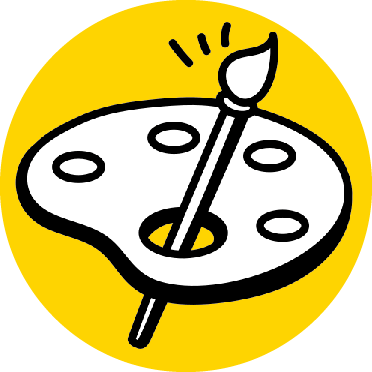How can I use this resource?
With this resource, you can learn about the life and work of Giorgio Morandi, the Italian artist and the master of still-life painting. You can also practice hatching, a technique that creates shading and depth with fine lines. You can use the worksheets of different motifs inspired by Morandi's paintings and fill them in with thin, dark lines. This is a great way to improve your concentration and pen control. Create your own hatching artworks and decorate your classroom with Morandi's simple and elegant style.
What does this resource contain?
This resource contains 16 worksheets for practicing hatching after Giorgio Morandi. Each worksheet has a motif of everyday objects. The worksheets are based on the paintings that are in various museums around the world. All of the motifs should be filled in with thin, dark lines. The best thing to use for this is a fineliner pen or thin ink pen. The lines should be close together but not touch. The guide image can be seen at the bottom left of each worksheet. On the right-hand side you’ll find the work area in which you draw the different hatching layers step-by-step. Once you’ve practiced, you can then fill in the stand-alone hatching templates!
Morandi: The art of hatching everyday objects
Giorgio Morandi (1890 - 1964) ranks among the most important still-life painters of modernism. His use of everyday domestic objects such as dishes, containers, bottles, cans, cups, and vases as subjects for his pictures is what earned him the nickname ‘The Bottle Painter’. He experimented a lot with the depiction of surfaces and space and was fascinated with the effects of light and shade. Morandi worked with the technique known as hatching, which is similar to engraving. Copper-plate engraving has no gray areas since printing only allows for the reproduction of lines, so shading and different tonal values can only be represented by hatching.
When hatching, gray tones and shading are created using many fine, straight, and parallel lines. When these lines cross, the impression of spatial depth is given. With the use of cross-hatching, many different shades and tonal values can be achieved with lines of the same thickness – the more the lines cross, the more layers are created and the darker the area looks. Up until the mid-twentieth century, art students had to practice hatching a lot. Hatching was employed as a concentration warm-up: Hatching helps you learn how to use the pen in a controlled way. Hatching is relatively slow, since to start off you need to really concentrate to make line after line with the pen. After a while, however, you get faster. All of the lines should look the same and have the same distance between them.
Learn hatching, a shading technique, with this easy and relaxing art activity! 16 Worksheets for practicing hatching after Giorgio Morandi.
Hatching after Giorgio Morandi
Learn hatching, a shading technique, with this easy and relaxing art activity! 16 Worksheets for practicing hatching after Giorgio Morandi.











